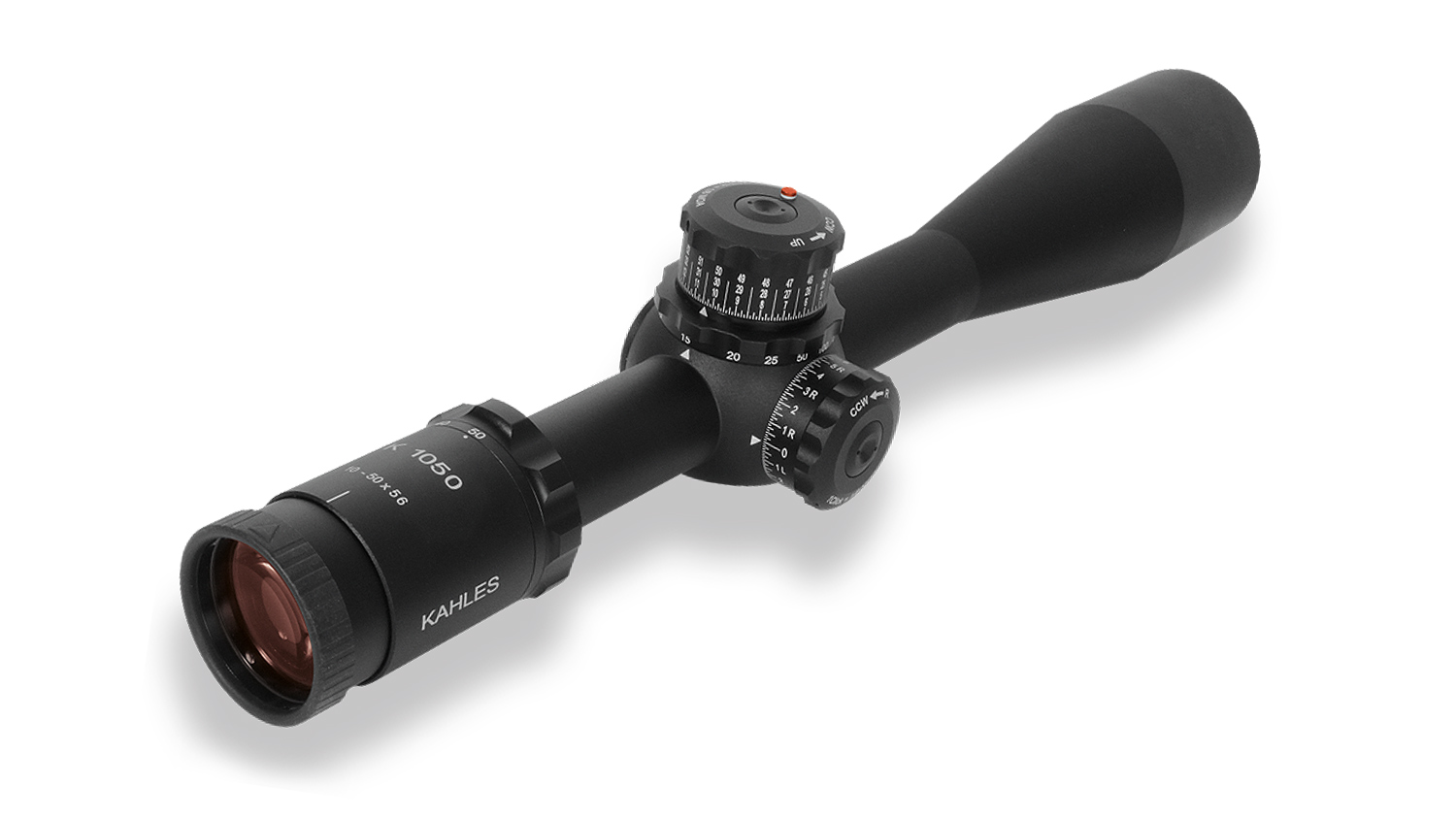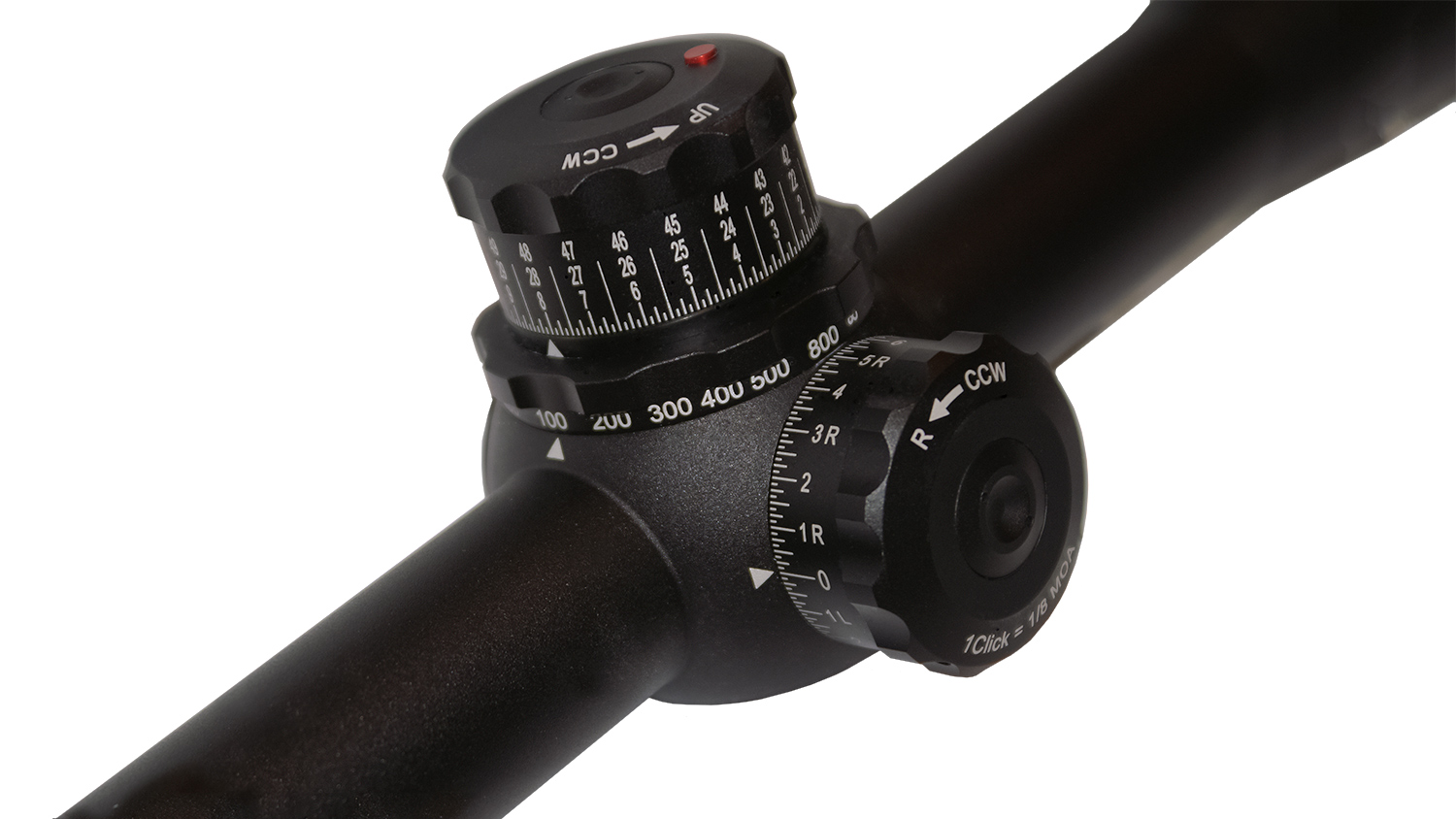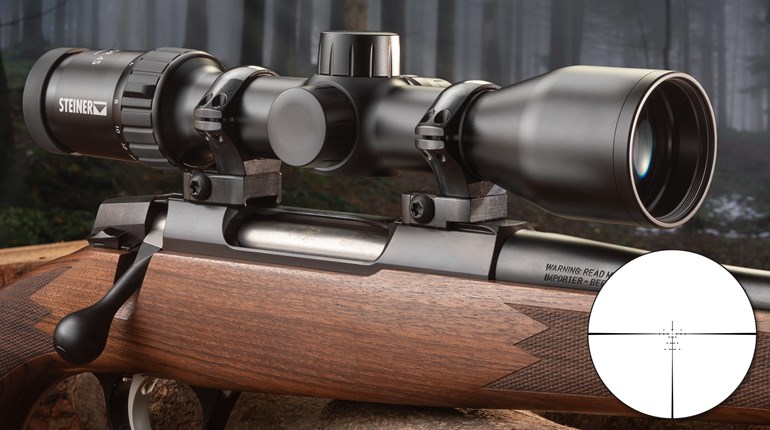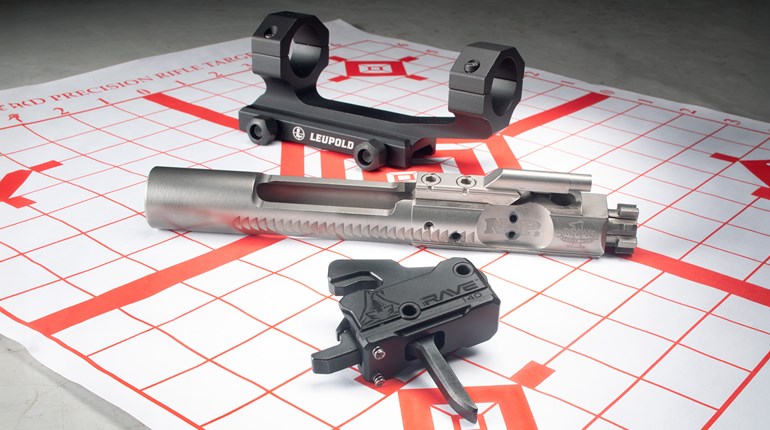
Kahles has decided to enter the highly competitive long-range high magnification scope market. This company was established in 1898, Kahles is HQ’d in Vienna, Austria and is the oldest scope producer in the world. It was also the first to water proof a scope via the use of O-rings. They obviously have the experience to make outstanding rifle scopes.
I have never used a Kahles scope, so when the opportunity to test one came up I jumped at the chance. When the box arrived I wasted no time getting it open.

My first thought when I opened the cardboard shipping box and saw the box inside was “what a nice looking box.” My second thought after lifting the scope out of the foam was, “boy this thing is built like a tank.” Its finish is a scratch resistant anodized surface rather than smooth and glossy. The adjustment knobs are rather large in diameter. Of course the first thing I did when I picked it up was look through the scope at the reticle, more about that later. The second thing was human nature; I had to turn the adjustment knobs. They moved with a good deal of force and have a very distinct feel to them. The scope comes with an elastic cover which can be used to protect the scope while it is mounted on your rifle, but ships with no sun shade or eye piece cap.
Since I am primarily an F-Open competition shooter this review will be from that point of view. All the info will apply to F-T/R and long range benchrest shooters, and perhaps many other shooting disciplines.
Eye relief rated at 3.75-inches. When I mounted the scope I placed the eyepiece at the same distance as my usual scope and had no problems. Note: The eye piece has a rubberized rim to help prevent the growth of a “third eyebrow” if you happen to have a high recoil cartridge or an extra-long neck.
Let’s take a look at the scope specs. The Kahles K1050 10-50x56-MOAK factory sheet says the scope weighs 31.4 oz. To double check the weights I used my home scale. On it, the Kahles showed 31.3 oz. The scope is 16.9-inches long. The MOAK refers to the installed reticle which has a fine crosshair with numbered hash marks. There is also a ‘floating’ dot in the middle. This scope will also focus down to 8 meters which is quite close for a high power scope.

I mounted the scope on one of my F-Class rifles (7/270 WSM) and took it to a local 1,000 yard BR match so the shooters could take a look through it and compare it to the Nightforce 12-42x BR and Nightforce 15-55x52 Competition scope positioned on the same bench. All were impressed with the look and feel of the scope. Everyone felt it had brighter, clearer optics than the Nightforce 12-42x BR scope, but judged it to be a bit below the Nightforce 15-55x Competition sitting beside it. Of course the clarity and brightness of a scope is not everything to a competitive shooter. Reliable adjustments, ease of use and the ability to hold point of aim mean much more to us.
Most everyone liked the hashmark reticle with its floating dot in the center. The hashmarks are calibrated at 40X. Each hashmark is one MOA (minute of angle). The lines making up the reticle are thick (0.035 MOA) which is a good thing for older F-Class shooters. The center dot measures 0.088 MOA at 40X. Everyone felt the clicks in both elevation and windage had an extremely solid feel.
To further checkout the Kahles, I hot footed to my Rod and Gun Club 100 yard range as soon as the winds were predicted to moderate below a full gale. My intent was to shoot a few groups and do a “box test” to check the tracking of the scope for windage and elevation and to get an idea of the repeatability of the adjustments. The stats state the clicks are worth 1/8th MOA per click. For reference, one MOA is equal to 1.047-inch at 100 yards.

To test this I first zeroed the scope at 100 yards and then clicked in 26 minutes of elevation (208 clicks). I wanted to cover the adjustment rang of a long range F-Class/1000-yard benchrest shooter. This should move the group impact up 27.222-inches. The actual impact was 27.75-inches or a little over 0.5-inch higher than you would expect. I next clicked 5 MOA (40 clicks) left. The group center moved 5.5-inches left. This compares to the calculated 5.235-inches. I then clicked down 26 MOA and again the group center moved down 27.75-inches. To finalize the test I clicked back to the original position by clicking 5 MOA right. The group over lapped the original one. So we can say the scope tracks very well but the adjustments figured out to be a skooch more than one minute of angle. Of course this might be due to trigger puller error or wind changes.
The scope has 55 MOA of elevation and 41.3 MOA of windage adjustment. The windage knob is like many target scopes in that the knob is marked from ‘0’ to 9L then 10 then 1R to 9R and back to ‘0’. You can zero the knob by loosening two set screws and slipping the knob. The elevation knob can be zeroed the same way. The elevation knob however is a bit different from the norm!
It has three rows of numbers, one above the other. The first row goes from ‘0’ to 20 MOA. The second row goes from 20 to 40 MOA and the third row from 40 to 60. This sounds strange but when you see it, it will become much clearer. The numbers ‘0’, ‘20’ and ‘40’ line up one above the other. To tell which line of numbers you should be looking at as you crank up or down elevation, there is a small red pin on the knob top. If it is flush you should look at the bottom (0-20 line). If it is sticking up about one mm you should look at the middle row. If it is sticking up about 2 mm then you use the top/third line of numbers. The pin is quite noticeable in movement as you jack up the elevation.

One of the things that really caught my eye was the parallax adjustment—it is below the elevation knob. This is a very handy place for a competitive shooter like me. I am left handed and shoot from that shoulder. But I use left bolt/right port actions. To adjust the parallax on a front adjustment I would have to get out of position and adjust the objective lens. On a scope with a left knob for parallax, I would have to use my left hand to adjust, which is a stretch. With the Kahles K10-50x56, all I have to do is reach up with my right hand and turn the wheel below the elevation knob while looking through the scope. I love this feature.
I turned both the elevation and windage knobs a half dozen or more times from one limit to the other while checking out this scope with no ill effects and then shot a number of pretty small groups while putting in large adjustments. After all my abuse I feel this is a welcome addition to the small group of top quality high power variable target scopes on market. I would be happy to use one.
MSRP: $3,110. May all your shots be in the center and very close together!



































